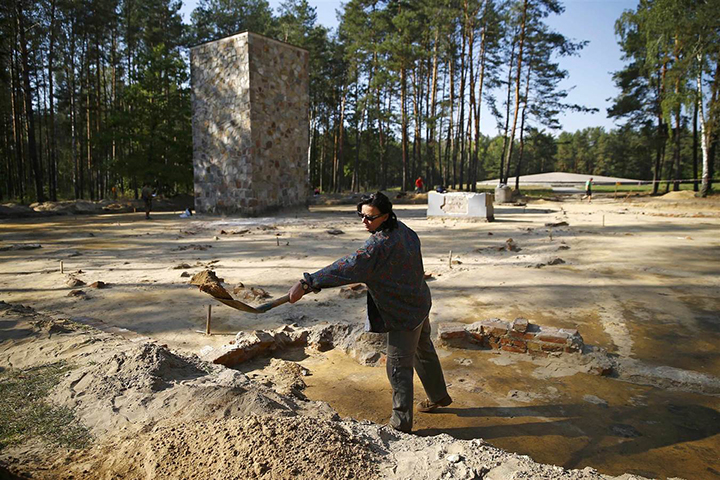
Archaeologists in eastern Poland at the site of the Nazi concentration camp at Sobibor say they have unearthed once-hidden gas chambers in which about 250,000 Jews were killed.
The German military attempted to wipe away the camp when they closed it after an rebellion there on Oct. 14, 1943. The Nazis destroyed the gas chambers. An asphalt road was then built on top.
Archaeologists excavated under the road and discovered lines of bricks, four deep. They believe this is where the walls of the gas chambers once stood, according to Reuters.
Archaeologists have been able to determine how large the chambers were. They say this information would help build up a more exact picture of how many were killed here.
"Finally, we have reached our goal -- the discovery of the gas chambers. We were amazed at the size of the building and the well-preserved condition of the chamber walls," said Yoram Haimi, one of the archaeologists.
Haimi said a couple of his uncles, who were living in Paris and were captured by the Germans, were killed at Sobibor, according to Reuters.
The archaeologists said they found numerous personal items, including a wedding ring which was inscribed in Hebrew: "Behold, you are consecrated unto me."
Because the Germans leveled the camp, and because so few of those held there came out alive to give testament, there is less information about the way Sobibor operated. Also, the scope of the killing than there is for many other concentration camps.
Polish archaeologist Wojciech Mazurek has also been involved in uncovering the sites anid said the excavations exposed eight gas chambers, according to Reuters.
"The extermination of people took place there; murder by smoke from an engine that killed everyone within 15 minutes in these gas chambers, in torment, shouting," he told Reuters Television.
"It is said that ... the Nazis even bred geese in order to drown out these shouts so that prisoners could not have heard these shouts, these torments."
According to Israel's Yad Vashem International Institute for Holocaust Research, the 1943 rebellion was organized by Jewish people at the camp and Jewish officers in the Soviet army who had been sent to Sobibor, according to Reuters.
About 300 people got out at this time, but most were recaptured and killed. Even those who did not take part in the getaway were killed. By the end of the war, about 50 escapees were left alive.
The research project at Sobibor is happeneing in coordination with the Israeli-based Yad Vashem International Institute for Holocaust Research, the German-Polish Foundation, and the Majdanek State Museum, near the Polish city of Lublin, according to Reuters.
Sobibór was a Nazi extermination camp on the fringes of the village of Sobibór, The camp was part of Operation Reinhard and the German name was SS-Sonderkommando Sobibór, according to Wikipedia. It was near the county's only major town of Włodawa. Jewish people from Poland, France, Germany, the Netherlands, Czechoslovakia, and the Soviet Union, as well as, perhaps, some non-Jewish Soviet POWs, were transported to Sobibór by train and killed in gas chambers fed by the exhaust of large engines, according to Wikipedia.














